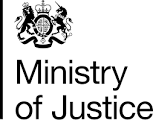PRESS RELEASE : Tighter direction for use of police cautions unveiled [August 2023]
The press release issued by the Ministry of Justice on 2 August 2023.
Stricter rules to govern how police use cautions will ensure they should only be used for minor, first-time offences under a new code of practice published today (2 August).
- government to end patchwork of cautions, warnings and penalties
- strict conditions attached to all cautions with penalties for any breach
- victims’ views to be enshrined at the heart of police decision making process
Last year, the government changed the law to end a patchwork of cautions, warnings and penalties that had previously led to the inconsistent and, sometimes, inappropriate use of so-called Out of Court Disposals (OOCDs).
It was replaced with a simpler two-tier caution system designed to deal with low-level and first-time offences in a proportionate way outside of court, while sending a clear message that serious, persistent offenders will always be pursued rigorously through the courts.
The new, draft Code of Practice provides stricter guidance to police on how and when to use OOCDs, including the need to consider victims’ views when considering using them and the conditions applied to any caution.
Justice Minister Damian Hinds said:
The current system for these punishments has grown unwieldy, and has led to inconsistencies in their use.
This simplified system will ensure victims see justice being delivered, better nip lower-level criminality in the bud and guarantee the most serious offenders always face the full glare of the courtroom.
The new cautions framework introduced through the Police, Crime, Sentencing and Courts Act 2022 has 2 types:
- Community Cautions (lower tier) where a breach of the conditions can result in a fine
- Diversionary Cautions (upper tier) where a breach of the conditions can result in prosecution for the original offence
They are an important way of tackling the early stages of offending behaviour, helping to nip it in the bud and steer people away from a life of crime.
Unlike in the previous system, both cautions must be issued with one or more meaningful conditions focusing on rehabilitation or providing direct restitution to the victim or the local community. These could include targeted unpaid work such as cleaning up graffiti, drug treatment courses or a compensation payment to the victim.
Offenders must admit their offence to be eligible for the new cautions, meaning they accept responsibility for their actions and engage with their punishment. Certain serious crimes like use of offensive or bladed weapon will be specified as excluded offences, sending a strong signal that serious offences should be pursued through the courts.
The changes will also provide clarity to frontline police officers over when and how cautions should be used, empowering them to deliver swift justice for low level offences while ensuring the public are always protected and serious offenders are always pursued through the courts.
NPCC Lead for Out of Court Resolutions (Disposals), Cmdr Dr. Alison Heydari, said:
I am delighted that we are moving into the next phase of the delivery of the new cautions framework.
The new simplified framework affords us the opportunity to divert those away from offending behaviours through appropriate Diversionary Interventions who otherwise might have entered the Criminal Justice System. The strategic intention is to support, educate and rehabilitate where it is appropriate to do so leading to better life outcomes for families, communities and wider society.
The consultation launched today sets out the draft Code of Practice for Diversionary and Community Cautions. Once finalised, the Code will provide operational guidance on the use, administration, and scrutiny of the new cautions. It will be used by Police, Crown Prosecutors, and other authorised bodies when considering sanctioning an offence out of court.
The draft Code of Practice sets out our proposals for how the new cautions will work, including factors to consider case-by-case for their repeat use and available financial penalties.


